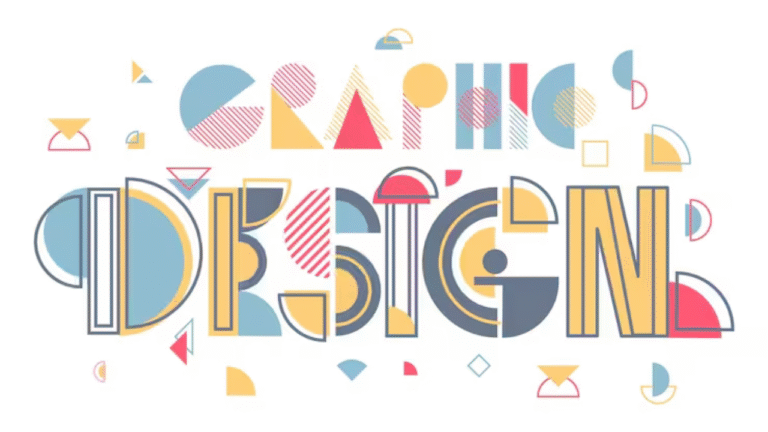Ever feel like everything looks… kinda the same? Whether it’s logos, websites, or even social media posts — it’s easy to get lost in a sea of lookalikes. That’s exactly why unique design matters. Not only does it stand out, but it also tells a story. Most importantly, it reflects you.
Let’s dive into what makes a design truly unique and how you can craft something unforgettable.
What Is a Unique Design?
The Meaning Behind “Unique” in Design
Unique design isn’t just about looking different. At its core, it’s about intentional creativity — work that reflects original thought, personal style, and meaningful impact. Instead of copying what’s trending, it reimagines what’s possible.
Why Originality Matters More Than Ever
These days, attention is hard to win. Since people scroll fast, you often have just seconds to capture interest. That’s where unique design shines. It breaks the routine, sparks curiosity, and makes viewers pause. In short, it gives your work personality.
The Power of Unique Design in Today’s World

How It Grabs Attention Instantly
We all know the endless scroll. However, unique design has the power to interrupt it. It stops thumbs, draws the eye, and makes someone feel something — joy, surprise, or even nostalgia.
Building Emotional Connection Through Creativity
Design isn’t just visual — it’s emotional. By using unexpected elements, you can trigger a connection with your audience. Whether it’s through playful colors or meaningful symbols, a one-of-a-kind design tells a deeper story.
Elements That Make a Design Truly Unique
Color Choices That Break the Mold
Most people play it safe with color. Yet, bold and unusual combinations — think teal and mustard or soft peach with neon pink — instantly stand out. Creative color use can set the mood and distinguish your brand from others.
Unconventional Shapes and Layouts
Forget cookie-cutter templates. Designs that play with asymmetry, negative space, and overlapping visuals feel fresh and original. While rules can guide you, breaking them often leads to better results.
Typography That Speaks Volumes
Fonts have a voice. Therefore, choosing custom or hand-lettered typography can make your message more distinctive. A quirky font or unexpected type treatment can become your signature style.
Personal Touches That Tell a Story
Unique designs often feel human. By including your own sketches, handwritten notes, or personal photos, you create something that can’t be copied. These little touches speak louder than perfect polish.
Unique Design in Different Industries
Fashion: Style That Stops the Scroll
In fashion, standing out is everything. Unique designs — like asymmetrical cuts, vibrant patterns, or upcycled materials — don’t just look cool, they feel expressive. They tell the world who you are without a word.
Architecture: When Buildings Tell Stories
Architects like Gaudí or Frank Gehry didn’t play it safe. Their buildings are living proof that structure can be art. Through shape, texture, and color, architecture becomes emotional and unforgettable.
Tech & UX: Function Meets Bold Aesthetics
Even apps and websites benefit from originality. Platforms like Notion and Duolingo use clever design to feel friendly, functional, and fun. Great UX blends creativity with usability.
Branding & Marketing: Be Memorable or Be Forgotten
Think of logos like Apple’s bite or Airbnb’s symbol. These designs weren’t just different — they were deliberate. Ultimately, unique branding helps people remember you long after they scroll away.
Tips to Create a Unique Design
Think Beyond Trends
Trends are helpful, but following them too closely makes you blend in. Instead, try to understand the “why” behind trends, then twist them into something new. Trust your instincts and let your creativity take the lead.
Mix and Match Mediums
Try combining digital art with physical textures, photography with doodles, or video with animation. These hybrids surprise the viewer and often lead to breakthroughs in style.
Collaborate with Unexpected Voices
Sometimes, the best ideas come from outside your bubble. Partnering with someone from a different field — like a musician, chef, or poet — can offer perspectives you’d never expect.
Common Pitfalls to Avoid
Copying Too Closely from “Inspiration”
It’s fine to gather ideas, but don’t fall into the trap of mimicking. Instead, use inspiration as a springboard, not a shortcut. The goal is to remix, not replicate.
Overcomplicating the Visual Message
Simplicity doesn’t mean boring. In fact, many unique designs succeed because they say more with less. Focus on clarity, then layer on the creativity.
Conclusion
In a noisy, crowded world, unique design helps you rise above the static. Whether you’re building a brand, a business, or a personal project, originality gives your work a pulse. It makes people stop, look, and remember.
So, go ahead — break the grid. Use the wild font. Draw outside the lines. When your design is you, that’s what makes it special.
FAQs
1. What makes a design truly “unique”?
A mix of originality, purpose, and personal expression. It’s not just different — it’s meaningful and memorable.
2. Can I use templates and still be original?
Yes, if you make bold customizations. Change the layout, colors, typography, and imagery to reflect your own style.
3. What tools can help me create unique designs?
Tools like Figma, Procreate, Adobe Suite, or even Canva (with heavy editing) work great. Ultimately, your creativity matters more than the tool.
4. How can I find my unique design style?
Experiment! Try new things, take risks, and analyze what you enjoy creating. Over time, your visual voice will shine through.
5. Is unique design always better?
Not always. It depends on your goal. But when you’re trying to make an impact, originality usually wins attention — and hearts.

